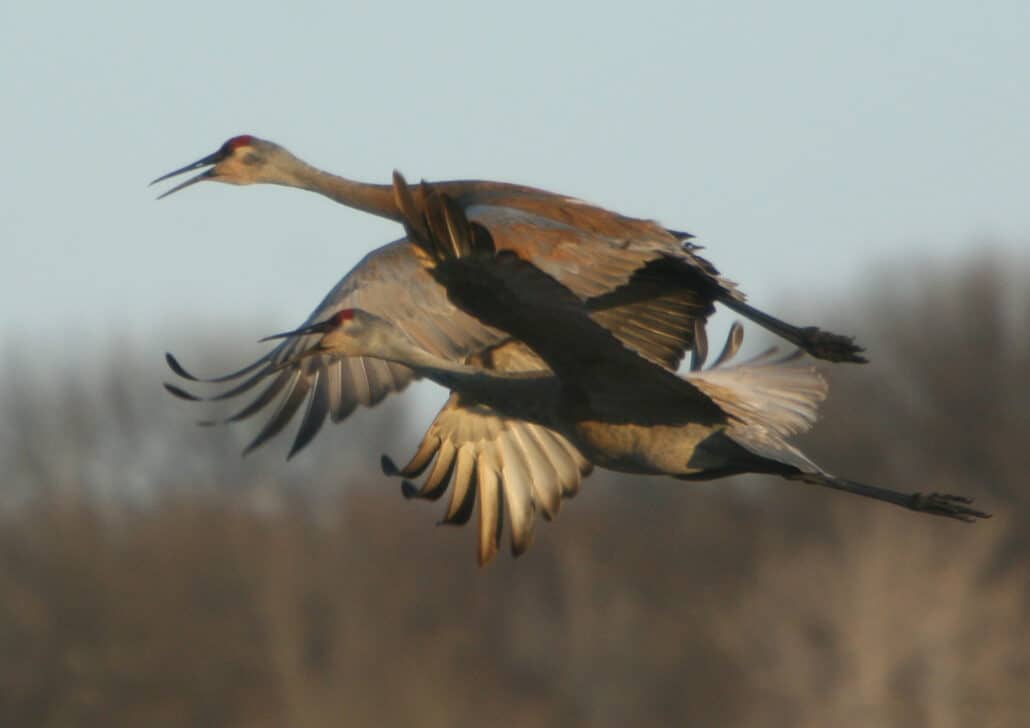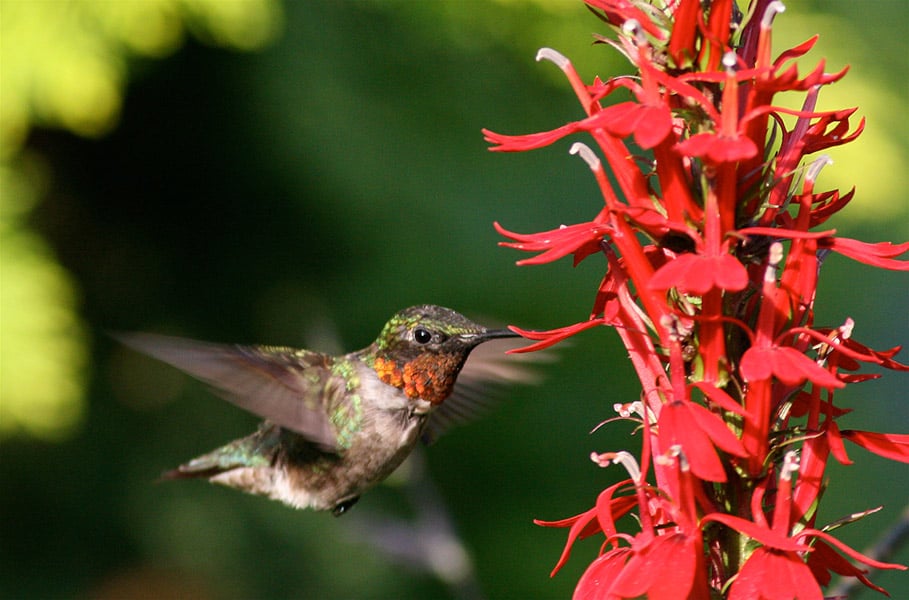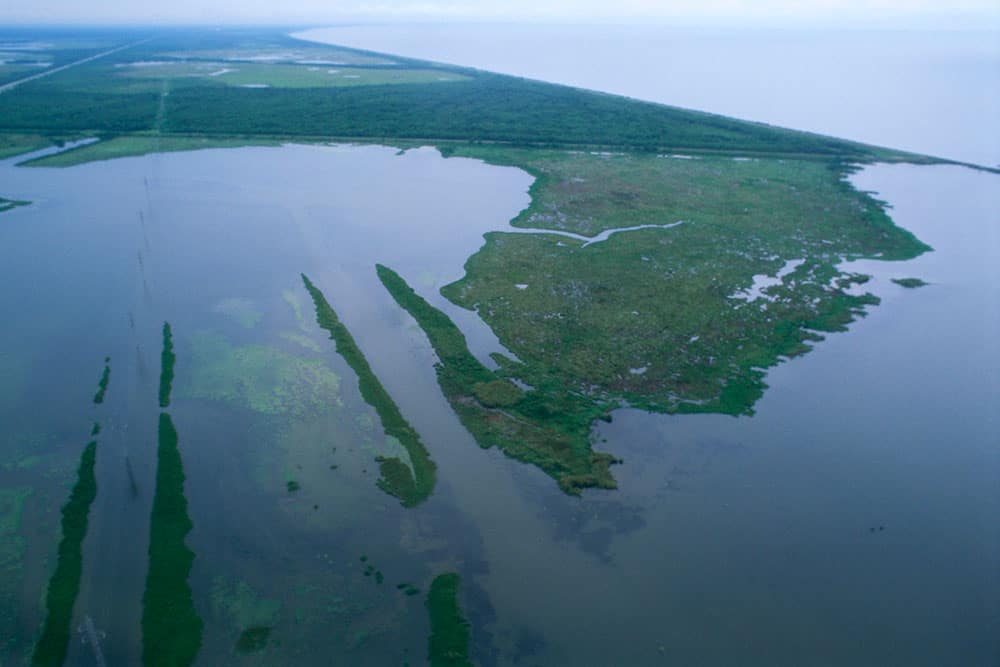Fall Birds of Indiana (September, October, November)
Blooming New England aster, Joe Pye weed, and the first goldenrod, poison ivy, summac, and Virginia creeper leaves turning red signal the beginning of autumn in Indiana. Walnut leaves turn yellow and begin to fall. Bird watchers notice the changing colors of the leaves as they struggle to identify the passing peep sandpipers and look for the first migrating warblers.
Autumn in Indiana is a time of birds disappearing as well as appearing. Catbirds and brown thrashers, Baltimore orioles, rose-breasted grosbeaks, and scarlet tanagers disappear. Unlike spring when the date of first appearance of a species is noted, the date of disappearance is rarely known. One day the bird watcher just notices the catbirds are gone from the bushes around the yard, the brown thrashers from the trees along the stream, the tanagers from the woods, that they haven’t been seen in days. Yellow warblers and common yellowthroats are also gone.
In September people with hummingbird feeders begin to wonder how soon they should bring those feeders in. Some people become concerned that having their feeders out may be the reason a few hummingbirds are still there and that those birds may be caught by an early frost. However, this is a myth. Keeping your hummingbird feeders will in fact help feed these tiny migrants on their long journey south.
By the end of September goldenrod blossoms are fading, the plants going to seed. The leaves of walnuts have fallen though there are still nuts on the trees. Cottonwoods have lost their leaves except a few that crown the very top. Maples and tulip trees, oaks and hickories and dogwoods and other trees have lost their green and turned to yellow and orange, red and brown. While the trees are changing to their brightest colors, warblers are passing through, many in their dullest colors.
Fall migration of little birds is far different than spring migration. In spring those birds were in breeding plumage, the warblers so brightly colored they have been called butterflies of the bird world. They were singing. They seemed full of energy, ever active, easy to spot but difficult to get a good look at as they flitted about. In fall they are in eclipse plumage. They look dull, shop-worn. They don’t sing though they do call occasionally, the warblers with faint lisps and seeps. They appear to move more slowly, more deliberately, the warblers and vireos almost seem to be sneaking through the tree branches.
October is the peak of fall color in Indiana. It’s then or early in November that Hoosiers go to Brown County in southern Indiana to enjoy the color and the weather. October’s bright blue weather is not just a saying but usually a fact. The temperature dips, there is often frost at night toward the end of the month but the temperature during the day is mild. Mosquitoes and flies and other insect pests no longer bother us when we’re outdoors.
In October and into November flocks of ducks and geese are migrating through. This is a good time for bird watchers in the state to visit the Indiana Dunes and look for birds that are rare visitors, perhaps a brant or a Eurasian wigeon, a glaucous or Iceland gull. For birders who don’t want to travel that far or risk being there when the wind is strong and cold and blowing across the lake onto the Indiana shore, any lake in the state may be visited by flocks of waterfowl.
Fall, of course, is the season when hunters as well as bird watchers look for ducks and geese. Deer hunters are also out and birders should be aware of this when walking in the woods. Hunting seasons are set by the year but are usually fairly liberal in Indiana. The wise birder will take note of them, not just for safety, but also because if there are duck hunters at a marsh or lake there won’t be ducks or geese nor likely many, or any, other birds, at least not for long.
As in spring, when the weather is fair and the wind favorable, blowing from the north in fall, bird watchers can go out in the country and watch for birds flying over. They may see flocks of ducks or geese or even sandhill cranes. They can watch for a white whooping crane among the gray sandhills. They may see red-tailed, broad-winged, Cooper’s, and sharp-shinned hawks, northern harriers, and a bald eagle or even two or three. Golden eagles have been seen in Indiana during late fall and winter.
Late October and early November is the time when bird watchers from Indiana, Illinois, Michigan, and Wisconsin and even farther make a trip to the Jasper-Pulaski Fish and Wildlife Area to see the sandhill cranes. Unlike in spring, in fall the birds gather and stay, often for a couple weeks or longer as others keep coming in. They feed in harvested grain fields around the area during the day, fly in and gather in the evening in a field called the goose pasture and some time soon after dusk fly to shallow marshes on the property where they roost, standing in the water. Anywhere from 10,000 to 30,000 sandhill cranes may be at Jasper-Pulaski at the peak, usually early in November. Late afternoon is the time to visit, Go to an observation platform, then stand, watch, and listen as the birds gather. Stay until nearly dark to see and hear as the birds take off, almost en masse, to fly out to the marshes.
To see more of the cranes, get there earlier and drive around the surrounding country looking for small flocks standing and feeding in harvested grain fields or flying across the sky, often quite low. Staying at a motel in a nearby town lets get out before dawn to see the birds leave the roost. Watch as they stream out in all directions and separate into small flocks, flocks of only a few hundred each. Watch closely for a white one-a whooping crane.
In November (as long as the experiment establishing a migratory flock of whooping cranes that spends summer at the Necedah National Wildlife Refuge in Wisconson and winter at the Chassohowitzka Refuge in Florida continues) bird watchers in Indiana can check the news to learn of the progress of these birds as they cross Indiana. Often the news includes a viewing site and time where birders can go to see an ultralite plane leading the cranes.
By the end of November the more common birds that nest farther north and winter in Indiana have arrived. Dark-eyed juncos and American tree sparrows have become regular visitors at bird feeders. Red-breasted nuthatches are scattered and uncommon but there are some every year and the bird watcher who has one coming to a feeder is considered lucky.
Thanksgiving passes and with it, it seems, so does the fall.




